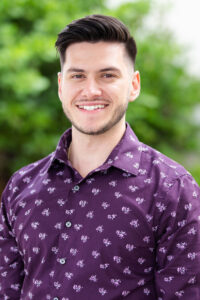By Yohann Kurzweil, Faithful Climate Action Fellowship
Natural catastrophes are not out of the norm for South Florida. As a Disaster and Emergency Management masters graduate and a church administrator, I have witnessed natural disasters and the rebuilding that follows.
Even though there is always a desire to be prepared, it is not always possible. Faith communities, although often at the forefront of offering care in these times, are often unprepared for the extent of help suffering communities require. With some guidance, however, sustainable change may be within reach.
What does it look like to make a community resilient?
We don’t like to think about the destruction of communities, but this is a reality. Communities are affected both physically and emotionally by disasters. Time after time, however, we see communities respond and rebuild. This is community resilience – the collective effort of individuals responding together to renew their community.

To rebuild, communities need help. But from where?
Often, faith entities have filled this role. In both natural and manmade disaster, they offer resources for individuals to heal. However, most faith communities could not have prepared for what we now face. With the pandemic plaguing the world and the hurricane season seeming more dangerous than ever, these organizations need to prepare themselves so they can properly help their communities.
What defines a community?
In emergency management, the term “whole community” is often used. Multiple parts make up the whole. These parts are known as “stakeholders” (private businesses, hospitals, schools, religious institutions, non-profits, etc.) and they are crucial to the success of the “whole community.”
Yet, some are overlooked because they may not have a political voice and are therefore never considered in planning meetings. Moreover, parts of the community that have more influence may get the money to promote themselves, while others are ignored. That sounds a lot like discrimination, and it leads to a divide in community preparedness.
Getting to the Root of It: Environmental Racism
Much of the divide in emergency management and preparedness correlates with deeper racial inequalities that stem disenfranchisement and disproportionate representation of people of color. For example, Hurricane Katrina disproportionately affected communities of color through racist redlining, construction projects, poorer building materials, and lack of insurance.
This problem continues today as we cope with COVID-19. It disproportionately harms those that have endured chronic air pollution because industrial plants are zoned near communities of color. The death rate from COVID-19 is three times greater for Blacks than their white counterparts.
Emergency preparedness leaders must consider all communities and offer more than simple public safety guidelines. They have to understand environmental racism and combat it with environmental justice funding, practices, and policies. This is the antidote to the toxic substance that is environmental racism.
Why You Should Care
Environmental justice starts with every person demanding change. The fight to address environmental racism is significant.
The House Select Committee on the Climate Crisis, chaired by Florida U.S. Rep. Kathy Castor, is making progress to improve emergency preparedness, but we cannot make sustainable change without taking charge ourselves. Furthermore, as people of faith, we can and needto work to promote change for our communities.
Rep. Castor is supporting the role of faith communities in building climate resilience. At the Faith Communities and Climate Resilience Summit, she’ll join Virginia U.S. Rep. Don McEachin and others who are on the frontlines of disaster response to educate participants on the tools they need to make sustainable change.
We must embrace a cooperative approach to end environmental racism. This summit is a great next step for anyone longing to make a difference.
The Faith Communities and Climate Resilience Summit is online, on Aug. 6, from 4 to 6 p.m. Registration can be found at SFLN.org.
Yohann Kurzweil is a native of South Florida who has studied Disaster and Emergency Management with a concentration in Public Health at Nova Southeastern University. He is the Administrator at Greenhouse Church and a Fellow with the Faithful Climate Action Fellowship.
“The Invading Sea” is the opinion arm of the Florida Climate Reporting Network, a collaborative of news organizations across the state focusing on the threats posed by the warming climate.



